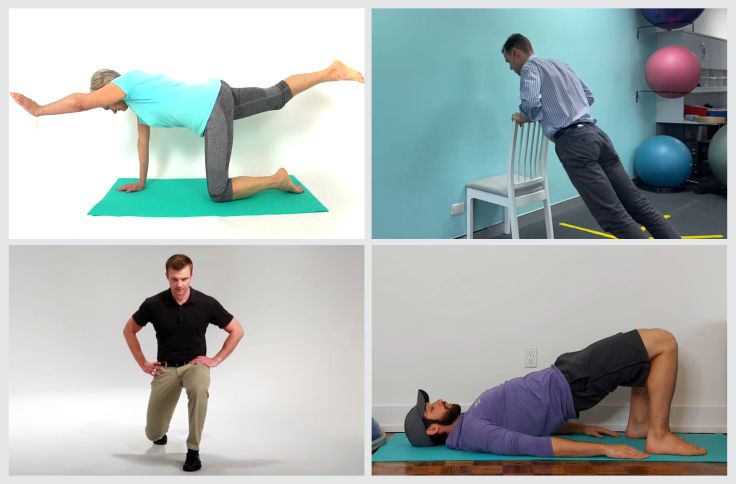Last updated on October 2nd, 2025 at 01:18 pm
Some older men can’t help themselves with moving around and reaching out for things. Regain strength, balance, and confidence with these functional fitness exercises for older men, designed to make everyday activities easier, safer, and more enjoyable as you age gracefully
As you advance in age, maintaining the strength and coordination to handle daily tasks becomes essential for independence and the quality of your life.
Functional fitness exercises focus on movements that mirror real-life activities, like bending, lifting, and reaching, not just building muscle or improving endurance.
Unlike flexibility and balance exercises for older men, which target specific aspects of mobility, functional training combines elements of strength, stability, and coordination in one practical workout.
It’s also different from traditional resistance or strength training for seniors, which often isolates muscles, and cardio workouts, which primarily enhance heart health.
Instead, functional fitness integrates multiple muscle groups to improve how your body moves as a whole.
This guide spotlights effective functional exercises designed specifically for older men to make everyday activities, like carrying groceries or standing from a chair, easier, safer, and more efficient.
Must Read: Guide to Oler Men’s Fitness

Main Points
- Functional fitness exercises for older men improve strength, balance, and confidence, making everyday tasks easier, safer, and more enjoyable.
- Functional fitness focuses on real-life movements, helping older men perform activities like lifting, bending, and reaching with ease.
- Benefits of functional fitness include enhanced mobility, reduced fall risk, improved posture, and increased confidence for maintaining independence.
- Functional training principles emphasize full-body movements, multi-joint exercises, core strength, and control, providing a comprehensive approach to senior fitness.
Recommended: Men’s Health and Wellness: Blue Print for Living Your Best Life
What is Functional Fitness for Older Men?
Functional fitness is all about training your body for everyday movements.
Unlike traditional exercises that focus on individual muscle groups, functional fitness combines cardio, strength, flexibility, and balance training to improve your overall mobility and performance in daily tasks.
For older men, this approach helps you stay active, independent, and free from injury.
These exercises mimic real-life actions, like standing up, walking, or reaching, and work multiple muscle groups at once.
Strength exercises ensure you can lift and carry items, balance drills help prevent falls, flexibility keeps your joints mobile, and cardio boosts endurance for longer activities.
By training in a way that reflects daily life, functional fitness supports your physical well-being, making it easier to move around, feel confident, and stay safe in your routines.
Recommended: Cardio Workouts for Older Men
Importance of Functional Fitness for Men Over 50
Functional fitness offers more than just exercise, it’s a pathway to maintaining independence and vitality as you age.
For older men, incorporating functional movements into a routine provides numerous benefits.
Here are five key reasons to make it part of your lifestyle:
- Enhances Daily Mobility: Improves the ability to perform everyday tasks like bending, lifting, and reaching with greater ease and control.
- Reduces Fall Risk: Strengthens balance and stability, helping older men stay steady on their feet and avoid accidental slips or falls.
- Builds Total-Body Strength: Engages multiple muscle groups to support full-body strength necessary for routine activities and physical independence.
- Improves Posture and Core Stability: Encourages better alignment and stronger core muscles, reducing strain on the back and improving overall movement efficiency.
- Boosts Confidence and Independence: Increases self-assurance in handling daily responsibilities without assistance, promoting a more active and self-reliant lifestyle.
Related: The ultimate list of best hobbies for men over 50
Principles of Functional Training for Seniors
When you move through your day, getting out of bed, walking up stairs, reaching for a shelf, your body works as a whole.
That’s exactly what functional training helps with. Instead of focusing on just one muscle at a time, you train your body to move better in real life.
You see why it is important for old people. While you have been doing these activities all your life, old age has an impact that makes it difficult to keep up, that’s why you should make extra effort to perform these simple trainings you will see later in this post.
Here’s how to make functional fitness work for you:
Focus on Movement, Not Muscles
Functional training is about patterns, not parts. You don’t just work your arms or legs, you practice full-body movements that support walking, bending, pushing, and pulling.
Think of exercises like squats or step-ups: they match how you move every day.
Use Multi-Joint Exercises
You’re not isolating a bicep here. You’re teaching your muscles to work together. Multi-joint movements, like lunges or resistance band rows, build coordination and help you stay strong in all the right ways.
Strengthen Your Core and Posture
Good posture keeps you steady. A strong core helps you stand taller and move with more control.
Core work like seated marches, standing twists, or bird dog exercises keeps your spine supported and reduces back strain.
Prioritize Control and Technique
It’s not about doing more reps, it’s about doing them right. Slow, steady movements build control.
Focus on your form, feel your balance, and pay attention to how your body moves. This sharpens your awareness and helps prevent falls.
Keep It Safe and Adaptable
Everybody is different. Choose exercises that match your ability and comfort level. If your knees don’t like deep bends, go shallow. If your balance feels off, use a chair for support. The goal is progress, not perfection.
Quick Tip: Listen to your body. Rest when needed, move with intention and stay consistent. Over time, you’ll feel stronger, steadier, and more capable in your daily life.
Recommended: Fitness Guide for Every Man
Best Functional Fitness Exercises for Senior Men
Engaging in functional fitness exercises can greatly enhance mobility and independence for senior men.
These exercises can be categorized into lower-body, upper-body, core and stability work, and full-body movements, each providing unique benefits.
1. Lower Body Functional Exercises
Your legs serve as the foundation for most movements you make daily.
Whether it’s walking confidently, climbing stairs, or simply standing up from a chair, having strong lower body muscles is essential to your mobility and independence, especially as an older man.
Here is how to strengthen your lower body:
Sit-to-Stands
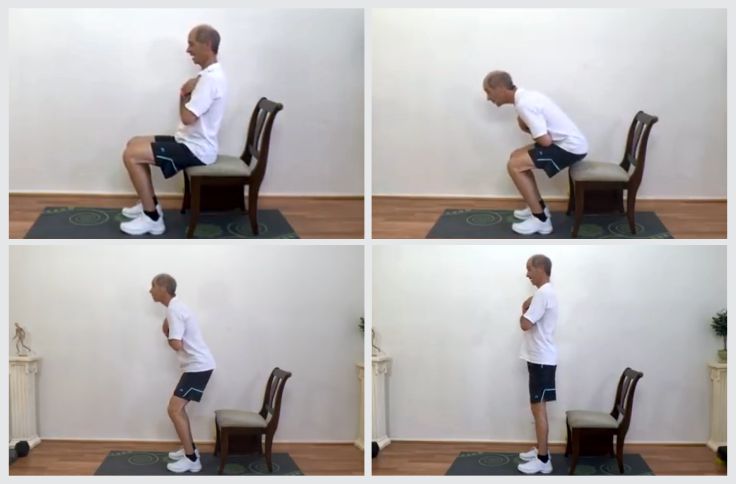
Sit-to-stands are excellent for mimicking the real-life action of standing up from a low surface, such as a couch or toilet.
This functional movement helps strengthen your legs and core. Start by sitting in a sturdy chair and then slowly stand up without using your hands for assistance.
If necessary, use your hands for added support. This exercise helps improve overall leg strength and stability, ensuring you can stand up easily in daily activities.
Step-Ups
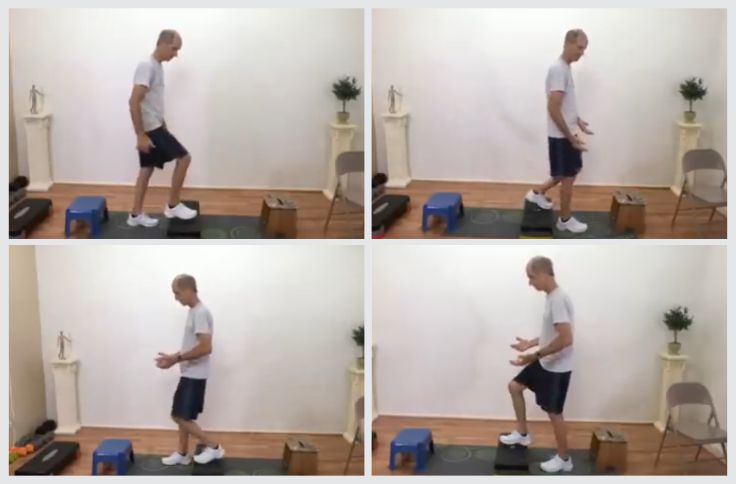
Step-ups are great for simulating stair climbing, a common movement in daily life. Use a low step or platform, ensuring it’s secure.
Step one foot onto the platform, then bring the other foot up, as if climbing stairs.
For added stability, hold onto a rail or counter. Gradually increase the height of the step as your strength improves.
This exercise targets your quadriceps, hamstrings, and glutes, while also improving balance.
Mini Lunges
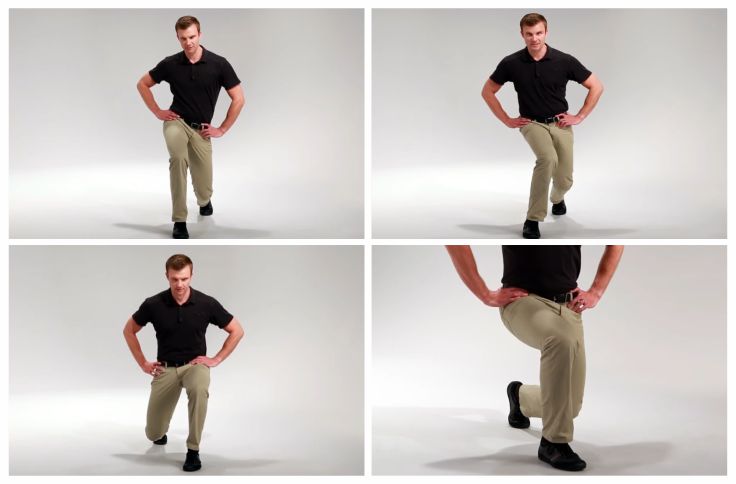
Mini lunges are a low-impact exercise that builds hip strength and enhances your balance.
Take a shallow lunge, keeping your knees behind your toes to avoid unnecessary strain on the joints.
This exercise strengthens the hip flexors, quadriceps, and glutes while improving stability.
Make sure to maintain proper posture and avoid deep lunges to protect your knees.
Glute Bridges
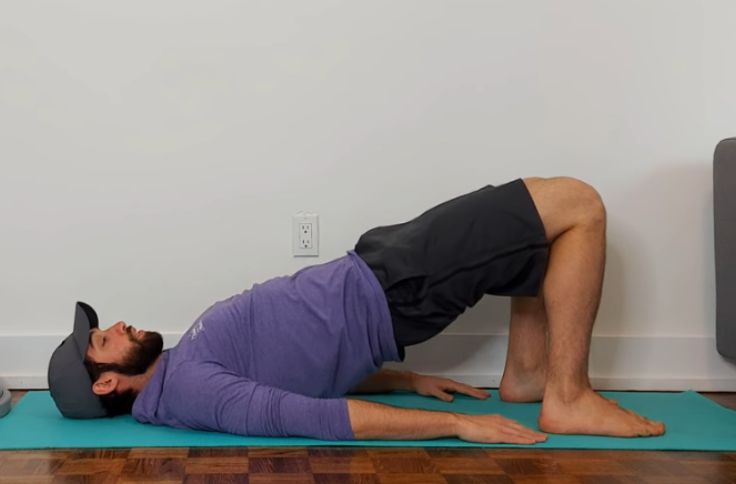
As an older person, glute bridges are effective for strengthening the hips and lower back, which are essential for overall lower body strength.
To perform a glute bridge, lie on your back with your knees bent and feet flat on the floor.
Push through your heels and lift your hips off the ground, engaging your glutes and core.
Hold for a few seconds at the top before lowering your hips back down. This movement helps improve hip extension and core stability, which supports your daily movements.
2. Upper Body Functional Exercises for Older Men
As men age, maintaining upper body strength becomes essential for staying independent and active.
From reaching for items on a high shelf to carrying groceries or opening jars, strong arms, shoulders, chest, and back muscles help you perform these everyday tasks with confidence and ease.
Wall Push-Ups

Wall push-ups are an excellent way for older men to build upper body strength without straining the joints.
Stand facing a wall, feet shoulder-width apart, and place your hands on the wall at chest height.
Slowly lower your body toward the wall, then push back to the starting position.
This gentle, low-impact exercise strengthens the chest, shoulders, and triceps, supporting everyday activities like pushing doors or rising from a seated position.
It’s a safe starting point that can be adjusted to your fitness level.
Resistance Band Rows
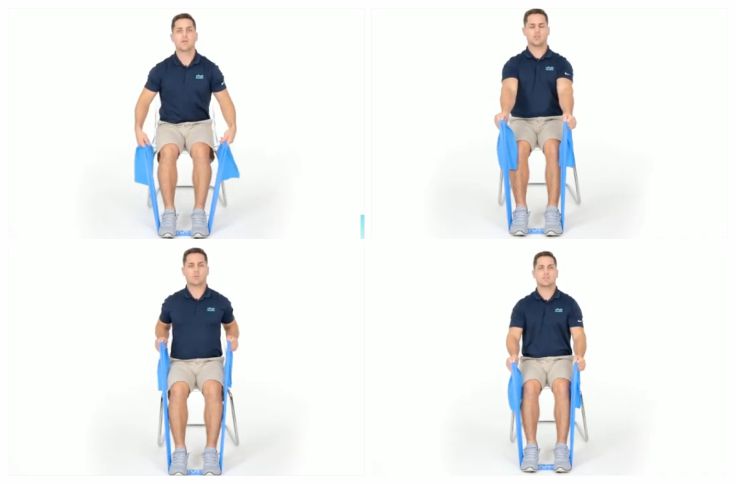
Resistance band rows are ideal for improving posture and strengthening the upper and mid-back, areas that often weaken with age.
Sit or stand with a resistance band looped around a secure object. Hold the ends of the band and pull them toward your chest while keeping your elbows close to your body.
This movement mimics the pulling motion needed for tasks like opening drawers or picking up a bag.
The band’s resistance can be adjusted to match your strength, making it an adaptable exercise for men at any fitness level.
Overhead Reaches
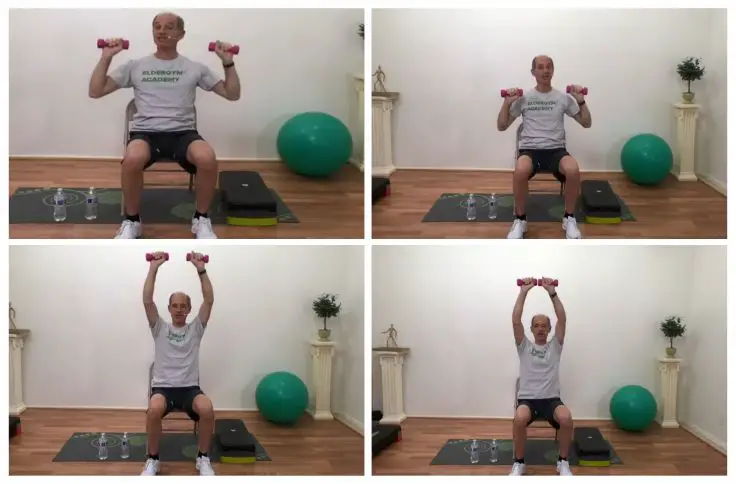
Maintaining shoulder mobility is key for older men, and overhead reaches help keep that range of motion intact.
Raise both arms slowly above your head, pause briefly, then lower them back down. This can be done seated for better balance and control.
Overhead reaches stretch the shoulder joints and improve flexibility, making it easier to perform daily tasks like dressing, reaching for items, or stretching after sitting for long periods.
3. Core and Stability Exercises for Older Men
As you grow older, having a strong and stable core becomes more important than ever. Your core isn’t just your abs, it includes the muscles of your lower back, hips, and pelvis.
These muscles work together to keep you balanced, stable, and mobile, reducing your risk of falls and making everyday movements like standing, walking, and getting out of bed much easier.
Bird Dog
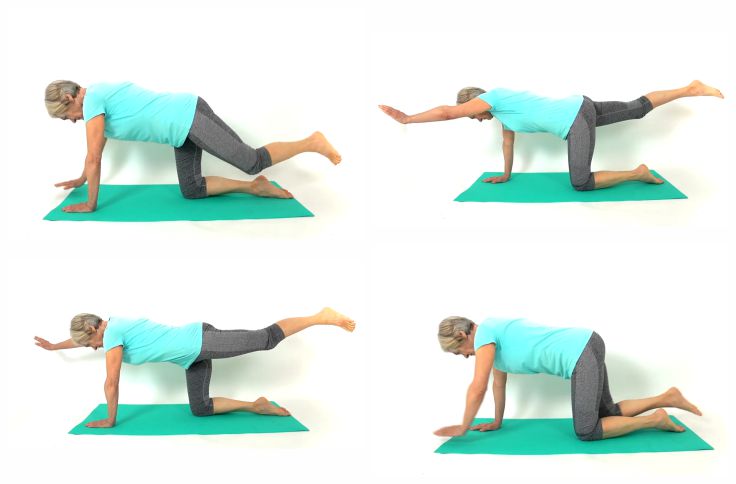
The bird dog is a simple but powerful core-strengthening move that also trains balance and coordination.
Begin on all fours with your hands under your shoulders and knees under your hips.
Slowly extend your right arm forward and your left leg backward, keeping your back flat and stable. Hold for a few seconds, then return and switch sides.
This controlled movement engages your core, back, and glutes, essential muscles for maintaining good posture and preventing lower back pain.
Seated Marches
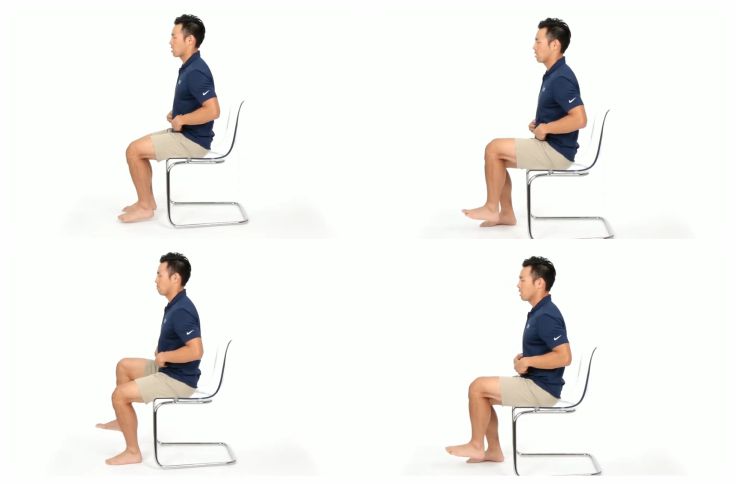
If getting down on the floor is difficult, seated marches offer a safe and effective alternative.
Sit tall in a sturdy chair with your feet flat on the floor. Lift one knee as high as you comfortably can then lower it and switch sides, just like marching in place while seated.
This gentle movement improves hip mobility and strengthens the lower abdominal muscles, which are crucial for balance and safe walking.
Dead Bug
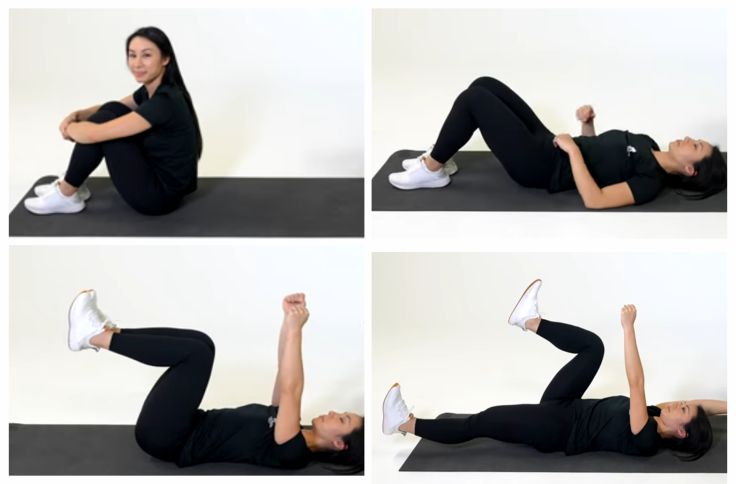
The dead bug exercise is another great core stability move for older men. Lie on your back with your arms pointed toward the ceiling and your knees bent at 90 degrees above your hips.
Slowly lower your right arm and left leg toward the floor while keeping your lower back pressed into the ground. Return to the starting position and alternate sides.
This move strengthens your deep core muscles and trains your body to move your limbs while keeping your torso stable, a fundamental skill for functional movement and fall prevention.
Recommended: Five Grooming Habits Every Older Men Should Prioritize
4. Full-Body Functional Exercises for Older Men
As you age, it becomes essential to train the body as one connected system—not just isolated muscles.
Full-body exercises help older men improve coordination, strength, balance, and endurance all at once.
These movements mimic real-life activities like lifting, carrying, walking, and reaching, keeping your body prepared for everyday demands.
Farmer’s Carries
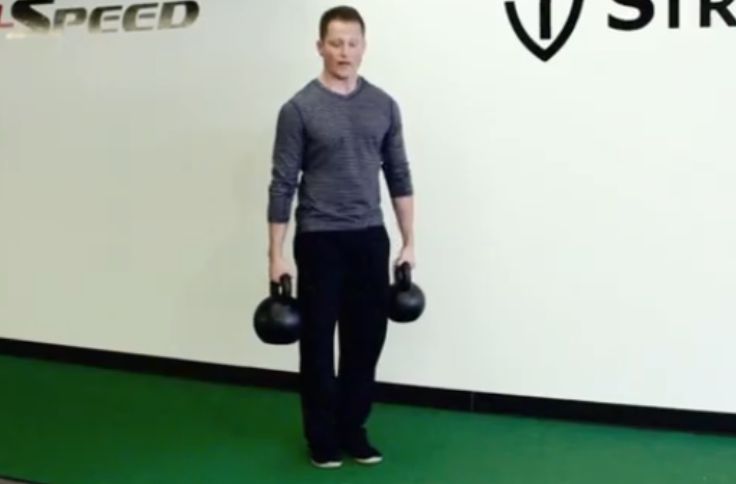
Farmer’s carries or farmer’s walk are simple but incredibly effective. Hold a pair of light dumbbells or even grocery bags at your sides.
Stand tall, engage your core, and walk in a straight line for 15–30 seconds.
This movement strengthens your grip, shoulders, arms, and core, muscles you need for carrying groceries, lifting objects, or holding on to handrails.
It also encourages good posture and balance with every step.
Kettlebell or Dumbbell Deadlifts

Deadlifts, when done correctly, teach you how to lift safely using your legs and hips, not your lower back.
Use a light kettlebell or dumbbell placed in front of your feet. With a straight back and knees slightly bent, hinge at the hips to lower down and lift the weight, then return to standing.
This builds strength in the hips, glutes, hamstrings, and lower back, all critical for bending, lifting, and rising from chairs or the floor.
Proper form is key, so go slow and focus on technique.
Medicine Ball Tosses
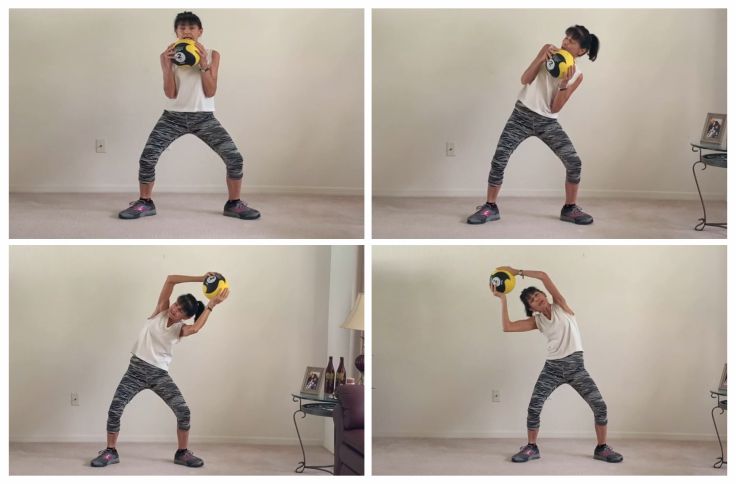
Reaction time and coordination naturally decline with age, but medicine ball tosses help keep those skills sharp.
Use a soft, lightweight ball and gently toss it to a partner or against a wall. Catch and repeat.
This improves upper body strength, hand-eye coordination, and quick reflexes, making daily movements like catching, reaching, or reacting to sudden shifts (like tripping) more controlled and responsive.
Heel-to-Toe Walking
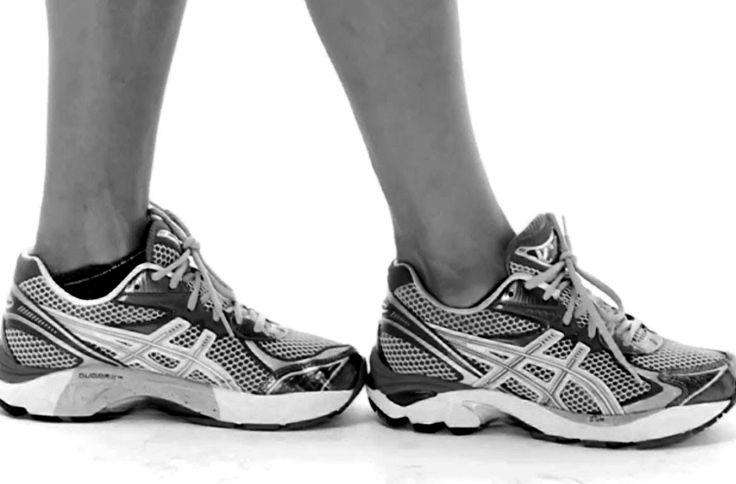
Balance is a huge priority for older men, and heel-to-toe walking is a simple way to sharpen it.
Walk in a straight line by placing the heel of one foot directly in front of the toes of the other with each step.
Keep your arms out slightly for balance if needed.
This exercise improves body awareness, foot control, and stability, helping prevent falls and making walking or navigating uneven surfaces safer.
Further Reading: Guide to Finding Love After 50 for Men
How to Build a Functional Fitness Routine for Seniors
Building a routine that helps you move better starts with a plan that fits your life as an older man.
If you’re a senior man looking to stay active, functional fitness gives you a way to train your body for the things you do daily, like getting up from a chair, climbing stairs, or reaching for a shelf.
This kind of training focuses on movement and balance, not just muscles.
How Often Should You Train
Aim to do functional fitness exercises two or three times a week. That gives your body enough work to improve and enough rest to recover.
You don’t have to do long sessions. Even 20 to 30 minutes is enough if you stay consistent.
Keep your routine simple. You can add strength training and cardio on different days, then mix in flexibility work once or twice a week.
This keeps your body strong, balanced, and mobile without feeling worn out.
Sample Weekly Plan
You can follow a structure like this:
- Monday: Functional strength training
- Tuesday: Light strength exercises with bands or weights
- Wednesday: Cardio such as walking or cycling
- Thursday: Functional movements again (different from Monday)
- Friday: Stretching or gentle yoga
- Saturday or Sunday: Optional walk or rest
You can switch the days based on your schedule. The goal is balance. You don’t need fancy equipment, just your body and a little space to move safely.
Warm-Up and Cool-Down
Always begin with a warm-up. Walk in place, swing your arms, or do shoulder rolls for five to ten minutes.
Add light dynamic stretches to get your joints ready. After your workout, take five minutes to cool down.
This is your time to breathe slowly and hold a few simple stretches. Your muscles will thank you the next day.
Listen to Your Body
Progress at your own pace. If a movement feels too hard or causes pain, change it or slow it down.
Good form matters more than reps. Over time, you can increase how long or how often you train, but only when it feels right.
It’s okay to rest more or swap an activity if your energy is low. You’re not in a race.
Get Support When Needed
If you have health concerns, talk to your doctor before starting. You can also ask a trainer who understands senior fitness to guide you.
They can show you safer ways to move and adjust exercises to match your needs.
Feeling safe and confident helps you stick to your plan and enjoy staying active.
Functional Fitness Tips and Safety for Senior Men
As with any form of exercise, safety and proper technique should always be a top priority.
Here are some tips to help you stay safe and get the most out of your functional fitness routine.
Focus on Form, Not Reps
When starting or continuing functional fitness exercises, it’s key to focus on form rather than the number of repetitions.
Proper form reduces the risk of injury and ensures the exercises are effective.
Slow down and make sure you’re performing each movement correctly. This helps you build strength and coordination safely over time.
Use Support When Necessary
Support can be a game-changer when it comes to functional fitness. Don’t hesitate to use a wall, chair, or resistance band to help with balance or stability during exercises.
This support allows you to focus on your movement while keeping your body in a safe, controlled position.
As you gain strength and confidence, you can gradually decrease your reliance on support.
Stay Hydrated
Hydration plays a key role in your performance and safety. Be sure to drink water before, during, and after your workout.
Dehydration can cause fatigue, dizziness, and muscle cramps, making it harder to complete exercises safely.
Keeping hydrated helps maintain your energy levels and ensures your body functions optimally during your fitness sessions.
Wear Proper Footwear
Wearing the right shoes is crucial for balance and stability. Shoes that offer good grip and cushioning can make a big difference in comfort and safety.
Make sure your shoes fit properly and are designed for the type of exercise you’re doing.
This simple step can help prevent slips and falls, keeping you safe as you work through your routine.
Know When to Seek Professional Guidance
If you’re unsure about your technique or have specific health concerns, working with a professional can be incredibly helpful.
A qualified trainer or therapist can provide expert advice and design a workout plan tailored to your needs.
They can help you perform exercises correctly, suggest modifications, and guide you toward achieving your goals safely.
The Role of Nutrition in Functional Fitness
Nutrition plays a key role in your ability to maintain independence and stay mobile as you age.
A well-balanced diet supports your overall physical performance, from muscle recovery to joint health and energy levels.
If you want to make the most of your functional fitness routine, it’s important to give your body the nutrients it needs.
- Personalized Nutrition for Your Goals: Tailor your diet to your fitness goals, considering your preferences and health, with guidance from a registered dietitian.
- Protein for Muscle Repair: Protein helps rebuild and repair muscles after exercise. Include lean meats, fish, eggs, and plant-based options.
- Healthy Fats for Joint Health: Omega-3 fatty acids from fish and nuts reduce inflammation and support joint function for easier movement.
- Hydration for Energy and Mobility: As mentioned earlier, staying hydrated improves energy, reduces fatigue, and ensures proper joint lubrication, helping you stay active longer.
- Vitamins and Minerals for Recovery: Calcium, vitamin D, and antioxidants from fruits and vegetables aid in bone health and reduce post-workout stress.
Tracking Progress in Functional Fitness
Tracking your progress in functional fitness helps you stay motivated and focused, making it easier to improve strength, balance, and mobility.
- Psychological Benefits of Seeing Progress: As you notice physical improvements, your self-esteem grows, and your attitude towards fitness becomes more positive and proactive.
- Fitness Journal for Accountability: Write down your workouts, repetitions, and challenges to track progress. Recording how you feel before and after can highlight improvements.
- Use Fitness Apps for Easy Tracking: Apps can help you log exercises, track trends in strength, and set workout reminders. Visualizing progress keeps you motivated.
- Set Realistic Goals for Clear Progress: Break down your goals into achievable steps. By setting small, realistic targets, you can maintain steady progress and stay on track.
- Celebrate Small Wins for Motivation: Notice small improvements, like added repetitions or better balance. Celebrating these wins boosts confidence and keeps you motivated to continue.
Frequently Asked Questions
What is functional fitness for older men?
Functional fitness focuses on exercises that replicate real-life movements, improving balance, mobility, and strength for everyday activities.
It enhances flexibility and joint health, making daily tasks easier and promoting overall physical well-being for older men.
How often should older men do functional fitness exercises?
Older men should aim for two to three functional fitness sessions weekly, lasting 20 to 30 minutes each.
These sessions should combine strength training and cardiovascular exercises, with a focus on maintaining mobility and improving overall physical health.
Are functional fitness exercises safe for older men?
Yes, functional fitness exercises are safe for older men when performed with proper form, and technique, and in accordance with individual fitness levels.
These exercises help improve strength, mobility, and balance while reducing the risk of injury when done correctly.
What are the benefits of functional fitness for men over 50?
For men over 50, functional fitness improves mobility, reduces the risk of falls, strengthens muscles, and improves posture.
It also boosts confidence, supports independence, and enhances quality of life by making daily activities easier and safer.
Conclusion
Functional fitness exercises for older men are essential for maintaining independence, mobility, and overall quality of life.
By focusing on real-life movements such as bending, lifting, and reaching, these exercises ensure that seniors remain active and confident as they age.
Whether through enhancing balance, improving strength, or reducing fall risks, functional fitness integrates multiple muscle groups to keep the body strong and stable.
Incorporating a routine of functional fitness exercises will allow older men to tackle daily tasks more efficiently and with greater ease, improving not just physical health, but overall well-being.
References
- The effect of functional exercise program on physical functioning in older adults
- Functional fitness and psychological well-being in older adults
- Functional fitness benchmark values for older adults
- Functional Fitness Gain Varies in Older Adults Depending on Exercise Mode
Pyo Merez is a men’s lifestyle enthusiast and writer about the gentleman’s place and impact on society. Raised by a distinguished gentleman dad, he offers unique insights into how the mind of a gentleman works and how societal norms shape gentlemen’s identity and vice versa.
Through his insightful articles, Pyo taps into the depths of gentleman culture to provide perspectives on etiquette and manners in modern society.

